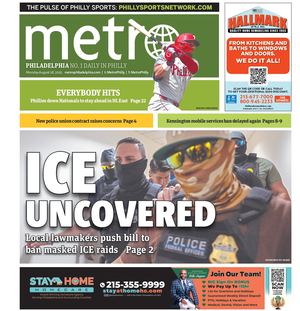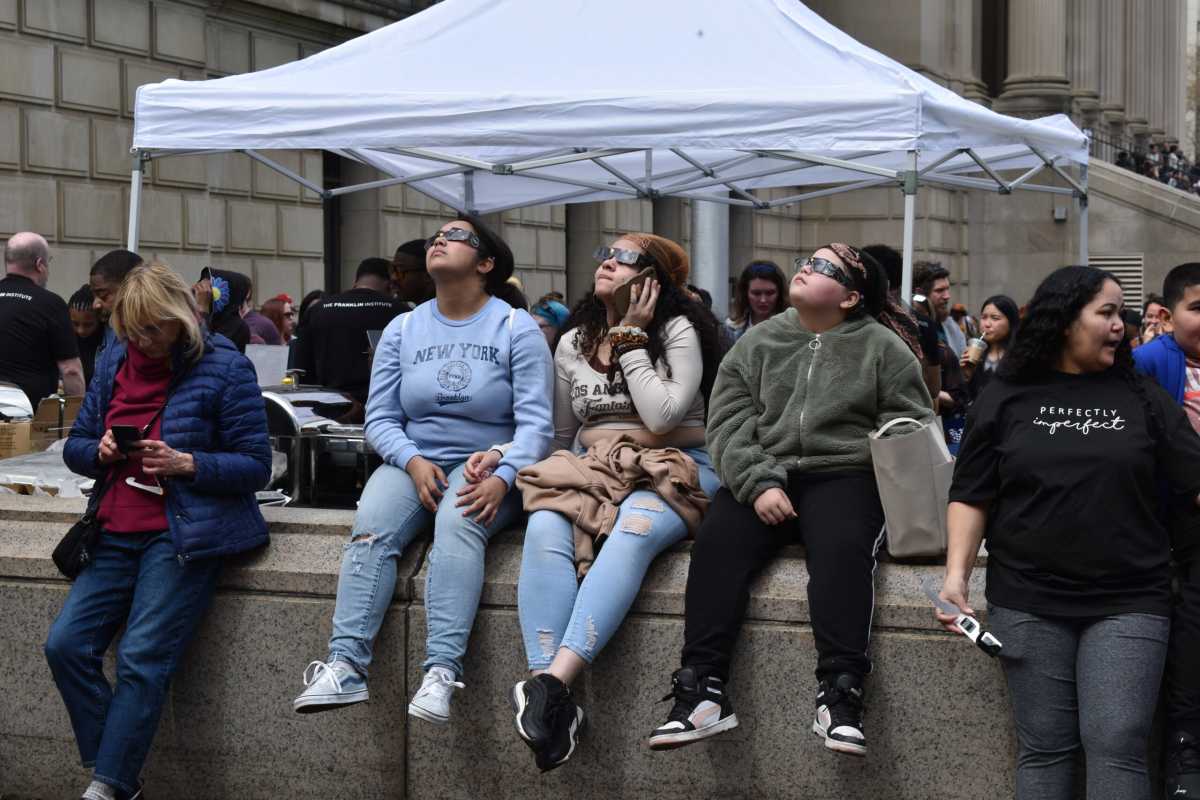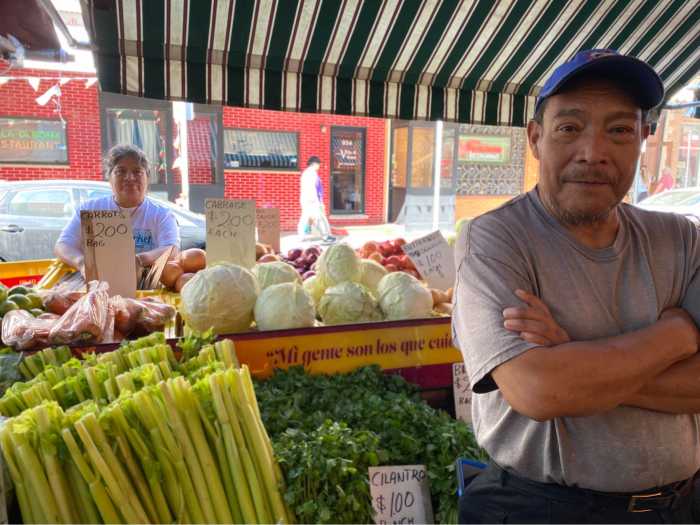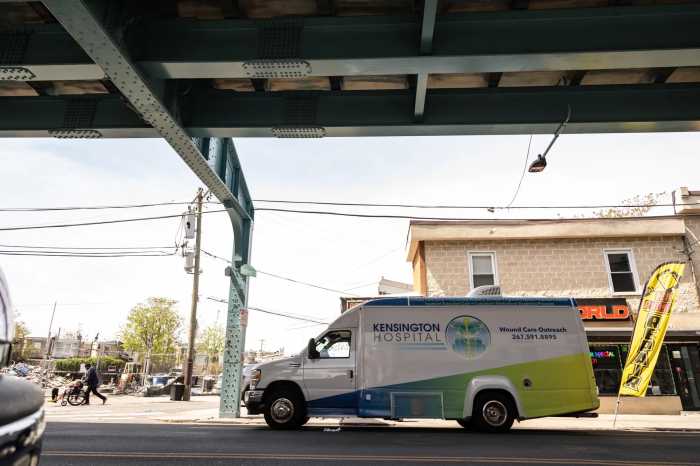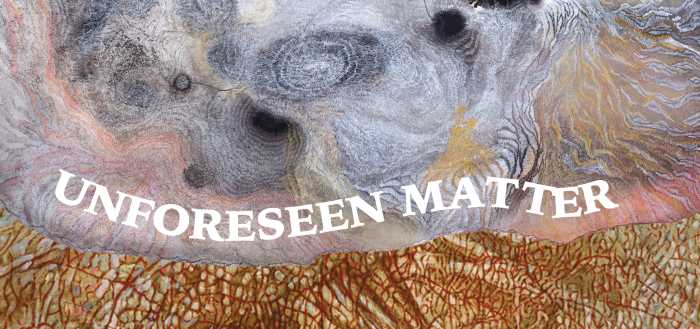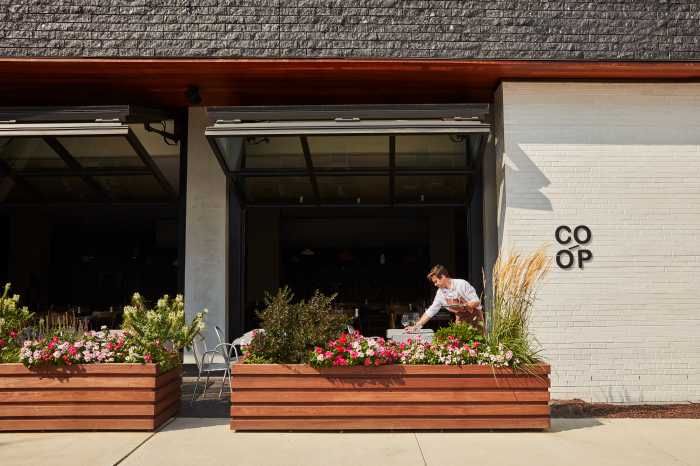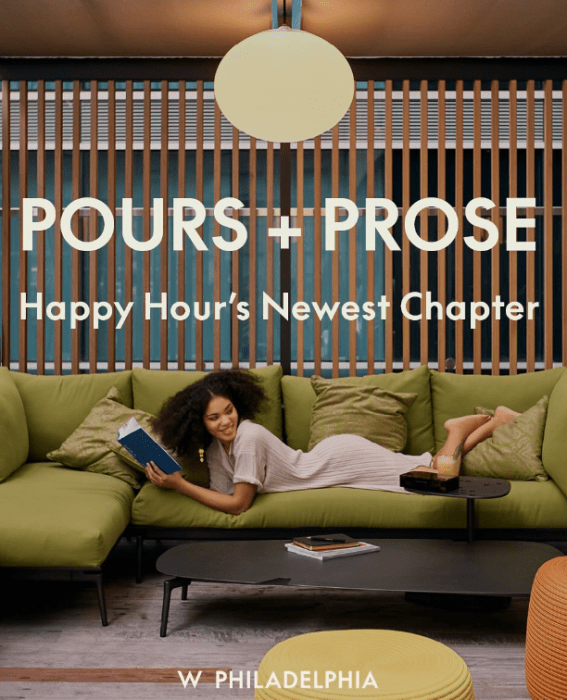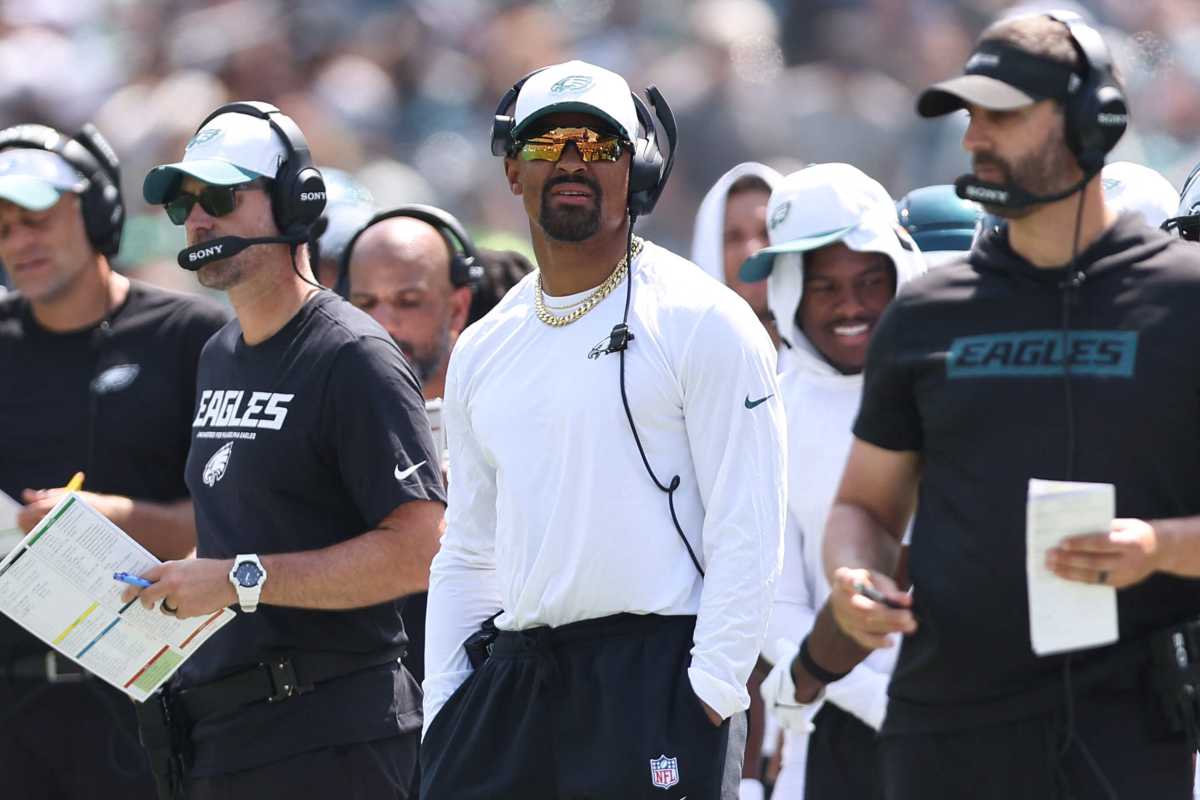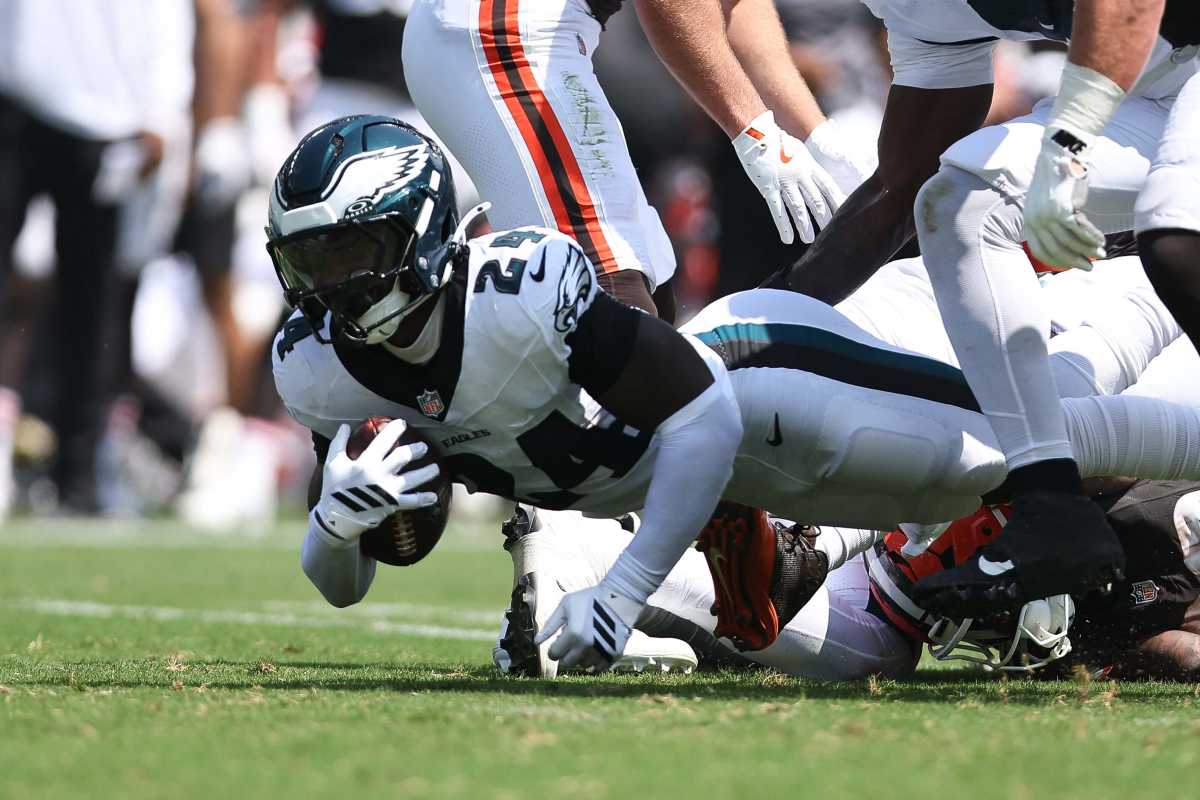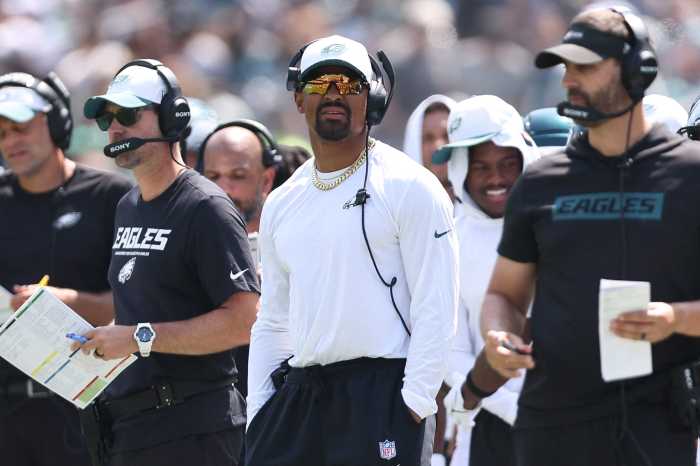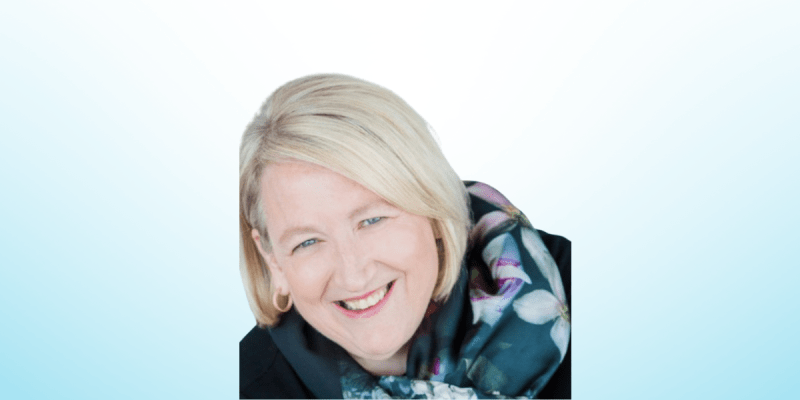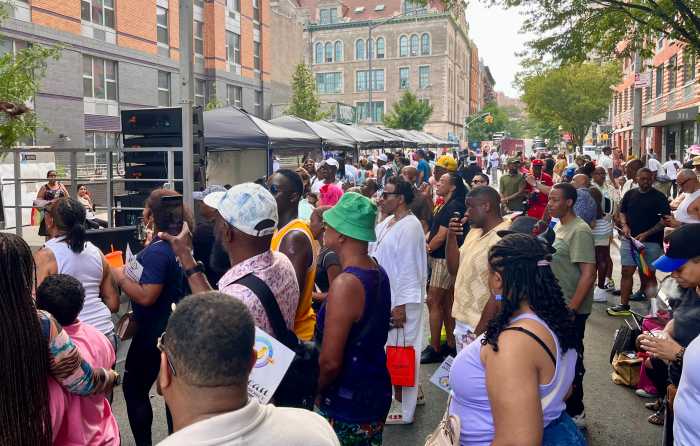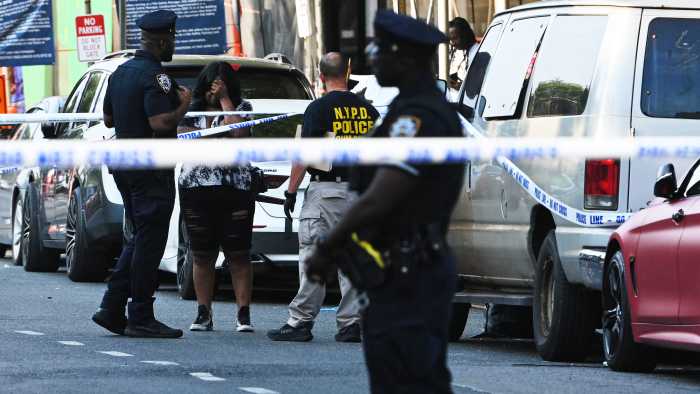The sky did become darker Monday afternoon – when the solar eclipse reached its peak in Philadelphia – but it was mostly due to cloud cover.
Though their view was obscured, the conditions did little to darken the moods of crowds outside the Franklin Institute, where a festival-like atmosphere greeted the solar event.
People gathered under tents with tinted panels that allowed them to look at the sun without eye protection. Kids raced in the courtyard, and women danced as a DJ blared music on the institute’s steps. More than a few people took the opportunity to drink on a weekday afternoon, by lining up at the museum’s pop-up beer garden or bringing their own beverages.

“Even if you’re not interested in astronomy, even if you’re not interested in science, everybody wants to be part of a celestial event,” Derrick Pitts, the Franklin Institute’s chief astronomer, said in an interview. “Everybody wants to be connected to the universe in one way or another.”
Prabhanjan Balakrishnan, 25, who lives in North Philadelphia, admitted he was lucky to buy his eclipse glasses at the institute’s store earlier Monday. The museum sold out a short time later, prior to the start of the eclipse.
“It’s a once-in-a-life-time thing,” he said. “You don’t get this kind of opportunity very many times.”
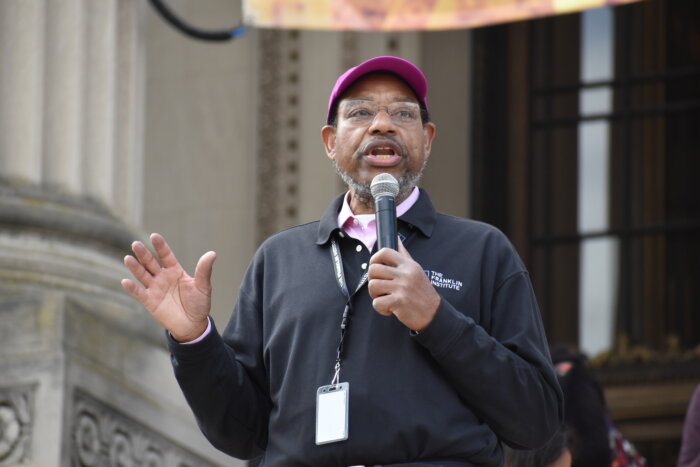
In addition to the glasses, folks held up tinted shards of paper, colanders, homemade contraptions and other devices to protect their eyes while watching the sun.
“For me, it’s the first time, and it will be the last time,” Marie Voelker, of Delaware County, told Metro. “I won’t be around the next time it comes,” adding that she is over 75 years old.
Pitts said Philadelphia will not see another major eclipse for at least two decades, with the nearest opportunity for a total eclipse not coming until 2079. He encouraged Monday’s attendees to travel overseas to view an eclipse.
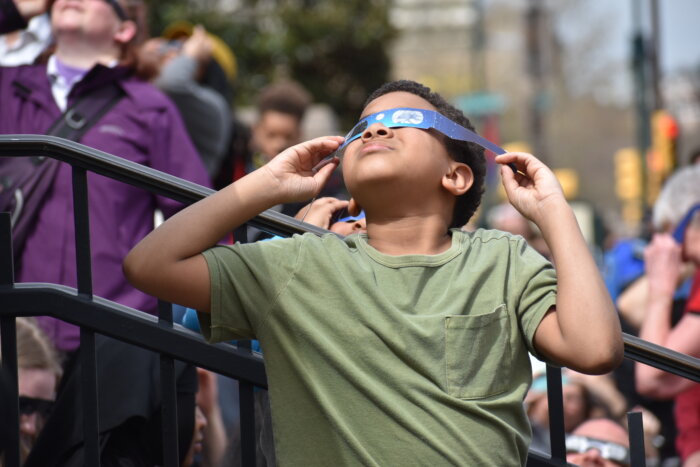
School buses and crowds began gathering at the Franklin Institute more than an hour before the start of the solar event.
Heavier cloud cover rolled in at around 3 p.m., 20 minutes before the height of the eclipse, when about 90% of the sun was covered. Sky-gazers quickly grabbed their eye coverings whenever the sun peeked through.
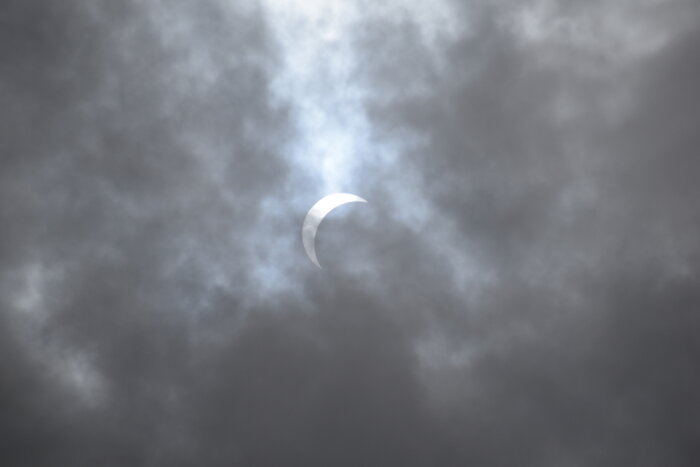
Rachel Jaje, of Northeast Philadelphia, brought her sons – ages 4 and 6, and interested in books about space – to the museum for the event.
“For them to be here to see it is really cool,” she said. “They were talking about it in school, in class, and they are really interested in it.”

